Best Microphone for YouTube can elevate your videos, making them more engaging and professional.
Creating high-quality content for YouTube requires the right tools, and selecting a reliable recording microphone is essential for clear audio. Understanding the different types of microphones available will help me choose the best option for my specific needs.
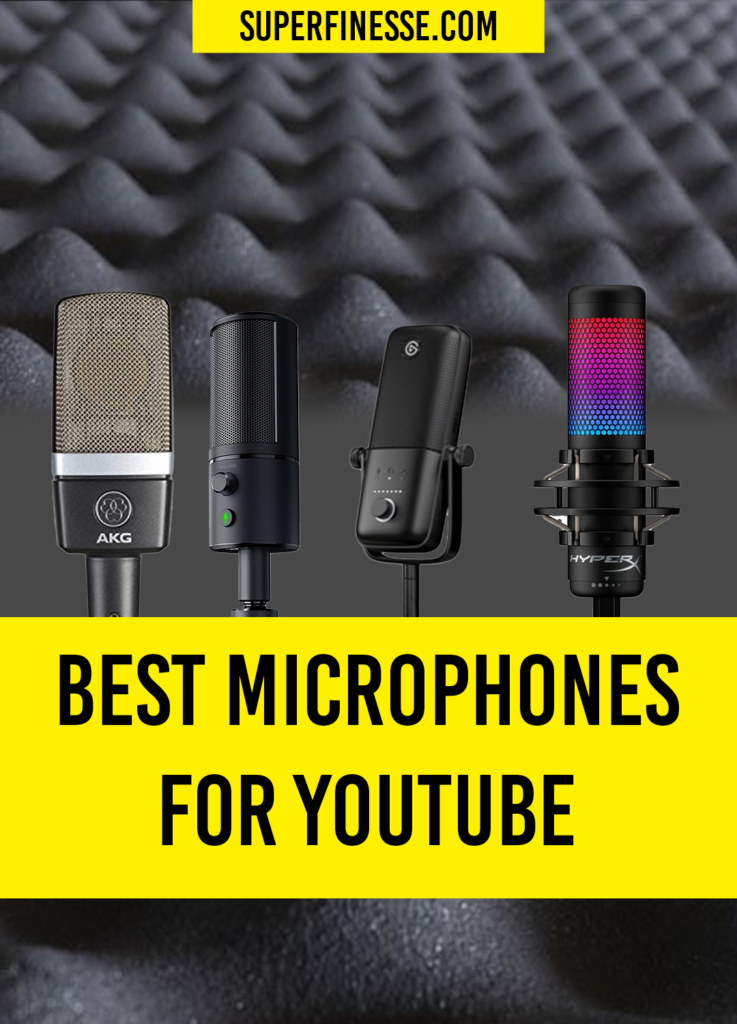
In this article, I will explore some top recording microphones catering to various styles and budgets. By examining these options, I aim to provide insights that will help enhance my audio quality, whether for vlogs, tutorials, or podcasts.
Also, feel free to watch the video below for an in-depth review:
Table of Contents
1) Shure SM7B
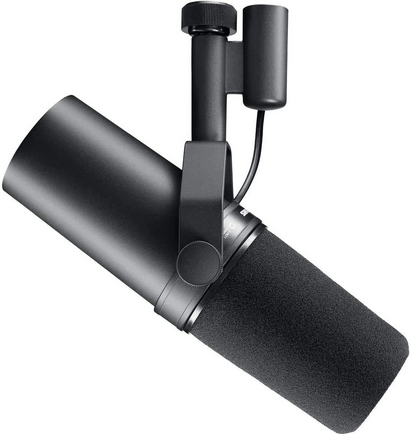
The Shure SM7B is a dynamic microphone known for its versatility and durability. It’s widely used by podcasters, vocalists, and streamers, making it a popular choice for YouTube content creators.
Its design includes a flat, wide-range frequency response, capturing rich sounds with clarity. This characteristic makes it ideal for speech and vocal performances.
The microphone has built-in air suspension and shock isolation technology, reducing unwanted handling noise. This feature allows me to focus on capturing high-quality audio without distractions.
I appreciate the switchable bass roll-off and mid-range emphasis controls. These options let me tailor the sound to fit different recording environments or vocal styles.
While the SM7B performs well in various settings, it does require a good preamp. This is important to ensure that I get the best sound without losing fidelity.
In terms of build quality, the SM7B is robust and designed to withstand regular use. Its classic look also adds a professional touch to any recording setup.
Overall, I find the Shure SM7B to be a reliable choice that delivers exceptional audio performance, making it stand out among recording microphones for YouTube.
2) Blue Yeti X
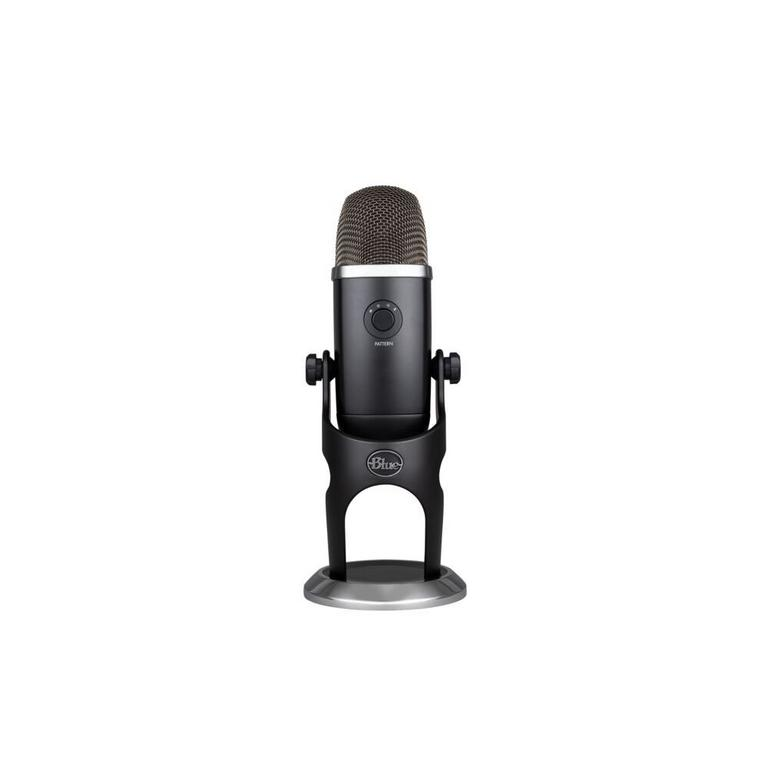
The Blue Yeti X is a versatile USB microphone that I find suitable for YouTube creators. It features a sleek design and is known for its high audio quality.
This microphone offers four polar pattern modes: cardioid, bidirectional, omnidirectional, and stereo. This flexibility allows me to choose the best setting based on my recording needs.
I appreciate its built-in LED metering, which helps me monitor my audio levels. This feature is particularly useful when aiming for optimal sound quality.
The Yeti X also comes with a headphone output for zero-latency monitoring. This allows me to hear exactly what is being recorded in real-time, which is essential for ensuring clarity.
Setting up the microphone is straightforward. I plug it into my computer, and it’s ready to go with minimal configuration.
The sound quality is impressive, with clarity across various frequencies, making it ideal for voiceovers and music. I can rely on it for both spoken word and instrument recordings.
Its sturdy construction ensures durability, a valuable trait when using the microphone frequently. The adjustable stand also helps position it perfectly for my recording sessions.
3) Rode NT1

The Rode NT1 is known for its exceptional sound quality and versatility. It captures vocals beautifully, making it a popular choice for YouTube creators.
With a self-noise level of only 5dBA, the NT1 stands out for its quiet operation. This feature is particularly beneficial when recording delicate sounds or in untreated spaces.
Its cardioid polar pattern effectively minimizes background noise, allowing me to focus on the sound source. This quality is essential for ensuring clarity in recordings.
The NT1 has a wide frequency response, ranging from 20Hz to 20kHz. This range helps capture a rich and accurate sound profile, suitable for vocals, instruments, and podcasts.
The build quality of the Rode NT1 is impressive. It’s durable yet lightweight, making it easy to handle during sessions. It also includes a shock mount, which reduces vibrations and handling noise.
In terms of connectivity, the NT1 utilizes an XLR output. This allows me to use it with various audio interfaces and mixers, enhancing its compatibility.
Overall, the Rode NT1 offers excellent value for its performance. It’s an ideal choice for anyone serious about audio recording on YouTube.
4) Audio-Technica AT2020
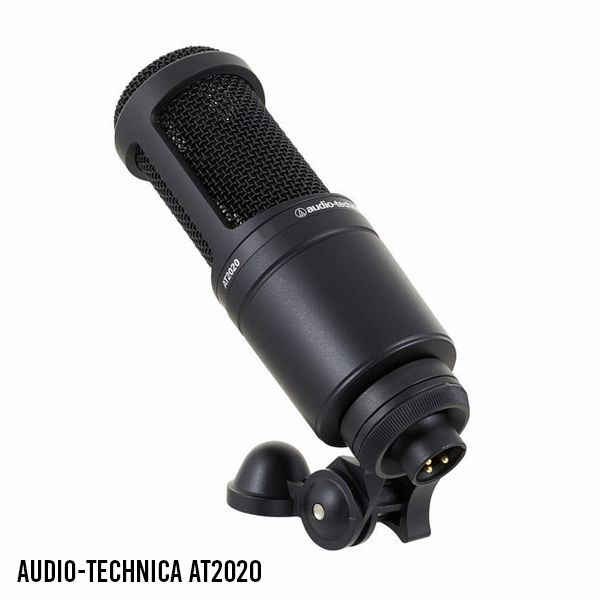
The Audio-Technica AT2020 is a popular choice among content creators for its value and performance. It features a cardioid polar pattern, which helps isolate your voice by reducing background noise. This is particularly useful in less-than-ideal recording environments.
The microphone has a frequency response of 20 Hz to 20 kHz, capturing a wide range of vocal tones. This allows for a natural sound reproduction, making it suitable for vocals, instruments, and podcasts.
With a robust build quality, the AT2020 can withstand regular use, making it a reliable option for YouTube creators. It connects via an XLR input, which is standard in professional audio equipment.
To use the AT2020, you’ll need an audio interface or a mixer to allow for proper connectivity. This setup can enhance the sound quality of recordings with added controls for gain, EQ, and effects.
For those just starting or looking to upgrade, the Audio-Technica AT2020 provides an excellent balance of affordability and performance. I have found it to be user-friendly and compatible with various recording software, making it a versatile option for my needs.
5) HyperX QuadCast S
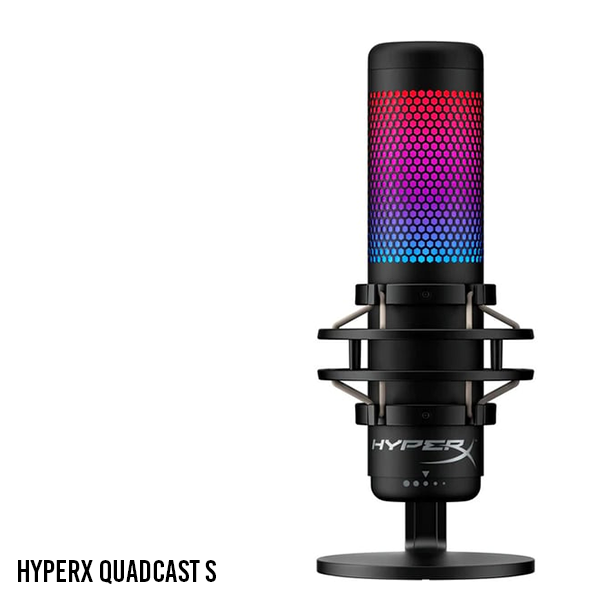
The HyperX QuadCast S is a versatile USB microphone that’s ideal for YouTube content creators. It features a stunning RGB lighting system that enhances its visual appeal, making it a strong addition to any streaming setup.
With its four selectable polar patterns, I can easily adjust the microphone for different recording scenarios. Whether I’m recording solo or hosting a podcast with guests, this feature provides the flexibility I need.
The built-in anti-vibration shock mount is another standout aspect. It effectively minimizes unwanted noise from desk movements, ensuring cleaner audio quality during my recordings.
Additionally, the QuadCast S has a pop filter that reduces plosive sounds. This functionality is crucial for achieving clear vocal recordings, especially when speaking directly into the microphone.
Installation is simple thanks to the USB Type-C connection. It’s compatible with both PC and Mac, making it a convenient choice for my setup.
The microphone also includes a convenient touch-sensitive mute feature. With a simple tap, I can silence the mic without fumbling with software, which is useful during streaming sessions.
All these features make the HyperX QuadCast S a solid choice for my YouTube recordings. Its combination of quality sound and user-friendly design ensures it stands out in a crowded market of streaming microphones.
6) Elgato Wave:3
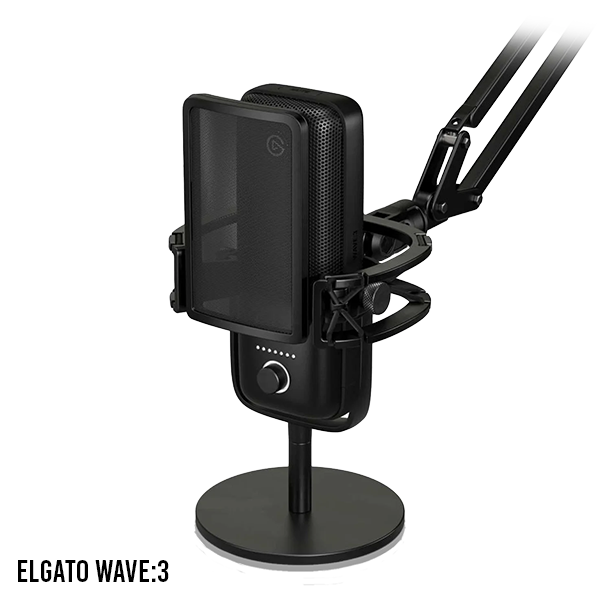
The Elgato Wave:3 is a USB microphone designed for content creators. It features a cardioid pickup pattern, which captures sound directly in front of the mic and minimizes background noise.
One standout aspect of the Wave:3 is its high-resolution audio quality. It supports 24-bit/96 kHz recording, ensuring that my recordings are clear and detailed.
It also includes a built-in digital mixer. This allows me to adjust audio levels in real-time, managing my microphone and other audio sources effortlessly during a recording session.
The Wave:3 integrates well with streaming software.
Elgato’s Wave Link application lets me mix up to eight audio sources, making it easy to balance my voice with background music or sound effects.
Another advantage is its sturdy build and compact design. It fits nicely on my desk without taking up too much space, and the sleek look complements my setup.
I appreciate the onboard controls for gain adjustment and muting. These features provide immediate access to important audio functions, simplifying my workflow.
In conclusion, the Elgato Wave:3 combines quality and functionality. It’s a reliable choice for anyone serious about audio production for YouTube.
7) Razer Seiren X

The Razer Seiren X is a compact USB microphone designed specifically for streamers and content creators. Its sleek design makes it an appealing addition to any setup, while its functionality caters to various recording needs.
This microphone features a super-cardioid pickup pattern. It focuses on sound directly in front while minimizing background noise. This quality is beneficial for YouTube creators aiming for clear and dedicated audio.
Latency is another concern for many creators.
The Seiren X comes with a built-in headphone output for zero-latency monitoring. This allows me to hear exactly what I’m recording in real-time.
The microphone has 24-bit/192kHz audio resolution, which captures detail in recordings. This clarity is essential for producing high-quality content. Additionally, the shock mount helps reduce vibrations and noise from my workspace.
Setting up the Razer Seiren X is straightforward. I just plug it into a USB port, and it’s ready to use. Compatible with both Windows and Mac, it fits seamlessly into my existing equipment.
For added versatility, it includes a mic gain control. This feature enables me to adjust the sensitivity according to my recording environment. All these attributes make the Razer Seiren X a strong contender for YouTube recording needs.
8) Samson G-Track Pro
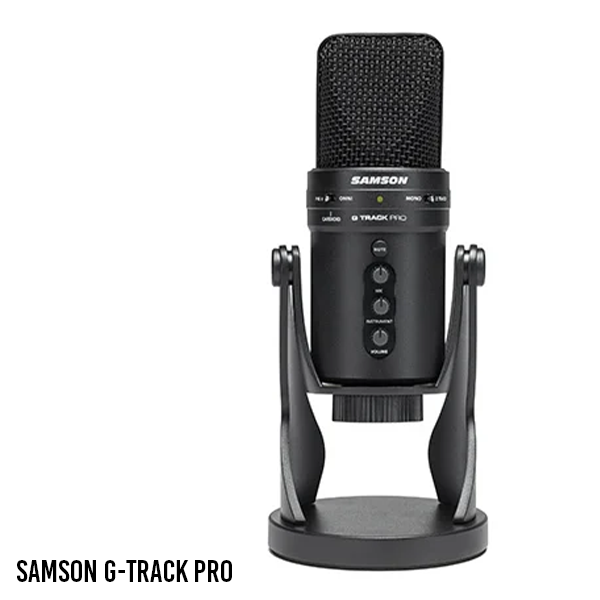
The Samson G-Track Pro stands out as a versatile USB microphone, ideal for YouTube creators. Its plug-and-play functionality makes setup straightforward, enabling me to start recording without complicated installations.
This microphone features a large 1-inch condenser capsule, which captures audio with clear detail. I appreciate the ability to switch between cardioid and omnidirectional pickup patterns, allowing me to adapt to different recording environments.
Additionally, the G-Track Pro includes a built-in audio interface. This feature allows me to connect instruments and other audio sources directly, which is beneficial when I want to incorporate music into my videos.
The headphone output with zero-latency monitoring ensures that I can hear myself in real-time, aiding in achieving optimal recording quality.
This allows for immediate adjustments and a smoother workflow during recording sessions.
Its sturdy design and adjustable stand provide stability, which is essential for longer recording sessions. The microphone also comes with adjustable gain control, allowing me to fine-tune the input level as needed.
Overall, the Samson G-Track Pro delivers high-quality sound and convenient features, making it a reliable choice for anyone serious about creating YouTube content.
9) AKG Pro Audio C214

The AKG Pro Audio C214 is a versatile condenser microphone known for its studio-quality sound. I appreciate its capability to handle high sound pressure levels, making it suitable for both vocals and instruments.
With a frequency response of 20 Hz to 20 kHz, the C214 captures a wide range of sounds with clarity. Its cardioid polar pattern effectively reduces background noise, which is beneficial for YouTube recording environments.
What stands out to me is the inclusion of a low-cut filter and a 20 dB pad. These features enhance its performance in various recording conditions, providing flexibility for different setups.
The build quality is robust, and the microphone feels solid in hand.
I find its design appealing and practical, ensuring durability during use.
The C214 is also relatively affordable compared to other high-end microphones. This makes it an excellent choice for creators looking to improve their audio quality without breaking the bank.
In summary, the AKG Pro Audio C214 brings a professional touch to my recordings. Its combination of performance, durability, and price makes it a reliable option for anyone serious about creating quality audio content.
10) Behringer XM8500
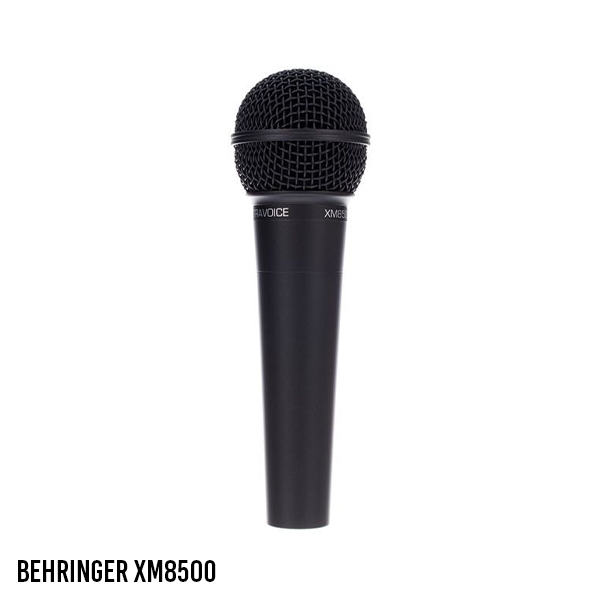
The Behringer XM8500 is a dynamic handheld microphone that stands out in performance and affordability. I appreciate its rugged design, making it suitable for both studio and live settings.
One feature I find impressive is its frequency response of 50 Hz to 15 kHz. This range allows for clear capturing of vocals, which is essential for YouTube recordings.
The cardioid pickup pattern effectively reduces background noise. This is particularly useful in untreated rooms where ambient sounds can interfere with audio quality.
I also like the built-in pop filter that helps minimize plosive sounds. This feature ensures that my recordings remain clean and professional.
The XM8500 is lightweight, making it easy to handle during long recording sessions. I find that it’s comfortable to hold, which is a plus when I’m working on extended YouTube content.
Its affordability does not compromise sound quality.
I have noticed that many users, including myself, appreciate the balance it strikes between price and performance.
This microphone comes with a detachable cable, adding convenience for a variety of setups. It’s compatible with standard audio interfaces, which is beneficial for my recording needs.
In summary, the Behringer XM8500 offers great value while delivering solid audio performance. It’s a reliable choice for anyone looking to enhance their YouTube video quality.
11) Sony ECM-CS3
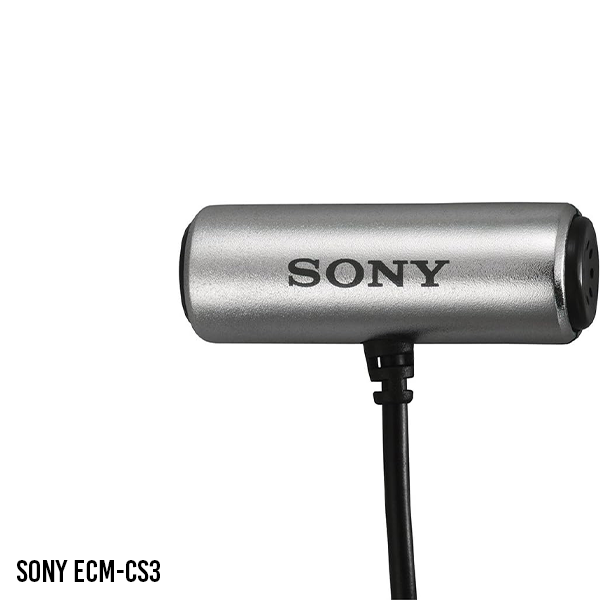
Even though this is not a condenser microphone, this is super portable and I added this to the list because not everyone prefers condenser microphone. If you are one of the them then the Sony ECM-CS3 is for you!
The Sony ECM-CS3 is a small, versatile lavalier microphone designed for various recording applications. Its compact size is ideal for YouTube creators who need to maintain mobility without sacrificing audio quality.
This microphone features an omnidirectional pickup pattern. This allows it to capture sound from all directions, making it suitable for interviews and vlogs.
I appreciate its ability to pick up clear audio, even in less-than-ideal settings.
The ECM-CS3 connects easily to various devices, including cameras and smartphones. This wide compatibility ensures that I can use it with my existing gear without any hassle. Setting it up is straightforward, making it accessible for beginners and experienced creators alike.
Another advantage is its lightweight design. Weighing just a few grams, it won’t weigh down my clothing or interfere with my movements during shoots.
This is particularly important for outdoor recordings or dynamic filming scenarios.
The microphone also comes with a windscreen, which helps reduce unwanted noise from wind and handling. This feature is essential when recording outside.
It ensures that my content remains clear and professional sounding, regardless of the environment.
Overall, the Sony ECM-CS3 stands out as a reliable choice for YouTube creators searching for a compact and efficient microphone. Its quality, ease of use, and portability make it a strong contender in the market.
12) Neumann TLM 103

The Neumann TLM 103 is widely recognized for its exceptional sound quality and clarity. I appreciate its large diaphragm, which captures vocals with remarkable detail and warmth. This microphone is especially useful for YouTube creators looking to elevate their audio production.
With a cardioid polar pattern, the TLM 103 effectively isolates the sound source while minimizing background noise.
This feature is essential for achieving clean recordings in less-than-ideal environments. Its sensitivity allows for capturing subtle nuances in voice performance.
The build quality is robust, reflecting Neumann’s commitment to long-lasting equipment. The microphone’s sleek design adds a professional aesthetic to my setup. Weighing in at just under a pound, it’s easy to mount on various stands.
The maximum SPL of 138 dB is impressive, ensuring it handles loud sound sources without distortion. This capability is beneficial when recording dynamic performances or instruments alongside vocals.
I find the TLM 103 versatile, suitable for both speech and music applications. Whether I’m narrating a video or laying down vocals for a track, this microphone delivers consistently high-quality results.
For anyone serious about improving their YouTube audio, the Neumann TLM 103 is a solid investment. Its performance justifies its higher price point, making it a favorite in professional studios and home setups alike.
Understanding Microphone Types
When choosing a microphone for YouTube, knowing the different types can significantly impact your sound quality.
Each type has unique characteristics suited for various recording environments and purposes.
Condenser Microphones
Condenser microphones are highly sensitive and known for their wide frequency response. They excel at capturing detailed vocals and subtle nuances, making them ideal for voiceovers, singing, and acoustic instruments.
These microphones require phantom power to operate, typically supplied by an audio interface or mixer. I find that their clarity and richness in sound make them a popular choice for studios and controlled environments.
Some popular models include the Audio-Technica AT2020 and the Rode NT1. While they can pick up background noise, using them in quieter settings can yield excellent results.
Dynamic Microphones
Dynamic microphones are more robust and can handle high sound pressure levels without distortion. They are less sensitive than condensers, which makes them suitable for live performances and louder sound sources like guitar amplifiers and drums.
These microphones do not require external power, making them convenient for various applications. I’ve often used them for vlogging and on-the-go recording because they’re durable and less prone to feedback.
Popular options include the Shure SM58 and the Sennheiser e835. Their versatility and resilience can be beneficial for both studio and field use, especially in dynamic recording situations.
Key Features to Consider
Selecting the right microphone for YouTube content involves examining several critical features. I focus on frequency response, polar patterns, and connectivity options. Each of these aspects plays a vital role in ensuring audio quality and capturing sound effectively.
Frequency Response
Frequency response defines how well a microphone captures audio across different frequencies. A typical range for recording vocals is 20 Hz to 20 kHz. This range allows the microphone to pick up the full spectrum of human voice nuances.
When assessing frequency response, look for a mic that offers a balanced representation of low, mid, and high frequencies. Some microphones may emphasize certain frequencies, which can highlight vocals but could also introduce unwanted coloration. For YouTube videos, clarity is crucial, so I prefer mics with a flat frequency response to maintain the integrity of sound.
Polar Patterns
Polar patterns determine how a microphone captures sound from different directions. Common patterns include cardioid, omnidirectional, and bidirectional. For YouTube recording, cardioid patterns are often ideal as they primarily pick up sound from the front while rejecting background noise.
An omnidirectional pattern captures sound equally from all directions, which might be useful for group discussions but can introduce unwanted ambient noise.
Bidirectional patterns pick up sound from the front and back, suitable for interviews. Understanding the polar pattern is essential in selecting a mic that fits my recording environment.
Connectivity Options
Connectivity options greatly impact how I integrate the microphone with recording equipment.
Common types include USB and XLR connections. USB microphones are straightforward, connecting directly to a computer, making them very user-friendly, ideal for beginners.
Conversely, XLR mics offer higher quality sound and more versatility but require an audio interface or mixer. This option can provide enhanced control over audio settings.
In my experience, the choice between USB and XLR largely depends on my recording setup and future needs, influencing which microphone I ultimately choose.
Setting Up Your Microphone
Getting the microphone set up correctly is essential for high-quality recording. Proper placement and adjusting the gain and levels will make a significant difference in sound clarity and overall performance.
Optimal Placement
For the best audio capture, I position my microphone close to the sound source. Generally, a distance of about 6 to 12 inches is ideal for vocal recordings. This range minimizes background noise while ensuring clarity.
Using a pop filter can also improve sound quality by reducing plosive sounds. I make sure the microphone is angled slightly toward my mouth rather than directly in front to avoid unwanted harshness.
I also consider the recording environment. Soft materials, like curtains or cushions, can help reduce echo and improve acoustics. Ensuring that my space is quiet and controlled helps in achieving professional-sounding recordings.
Adjusting Gain and Levels
After placement, adjusting the gain is crucial. I start by setting the gain level on my audio interface or mixer. It should be high enough to capture my voice clearly but not so high that it causes distortion.
I monitor the levels while speaking at my normal volume. Ideally, the levels should peak around -6 dB to -12 dB. This threshold provides a safety margin for unexpected loud sounds.
Using a Digital Audio Workstation (DAW), I test the sound and make final adjustments. Fine-tuning the gain ensures my recordings maintain quality without unwanted noise.
Also Read: Start a Blog That Makes Money
Conclusion
Even though you may be overwhelmed with a lot of microphone options, don’t be tempted to try them all when you are doing youtube.
Instead, try to pick one that you think is a good fit for you and the begin working on it. Especially if it’s your first time doing this.
The more you use the microphone, the wider your knowledge will grow on what kind of microphone you really like.
Happy creating!






